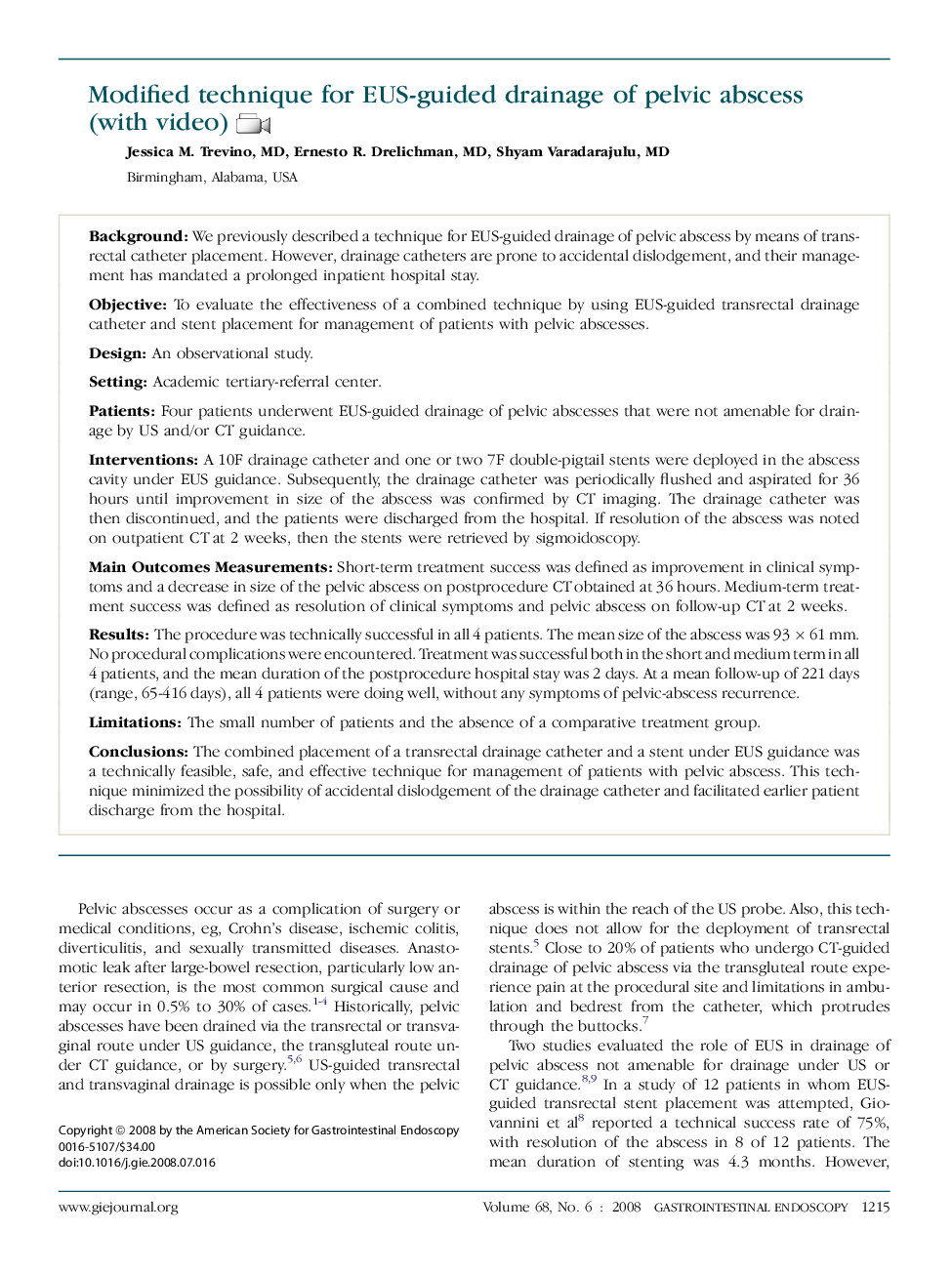| Article ID | Journal | Published Year | Pages | File Type |
|---|---|---|---|---|
| 3308265 | Gastrointestinal Endoscopy | 2008 | 5 Pages |
BackgroundWe previously described a technique for EUS-guided drainage of pelvic abscess by means of transrectal catheter placement. However, drainage catheters are prone to accidental dislodgement, and their management has mandated a prolonged inpatient hospital stay.ObjectiveTo evaluate the effectiveness of a combined technique by using EUS-guided transrectal drainage catheter and stent placement for management of patients with pelvic abscesses.DesignAn observational study.SettingAcademic tertiary-referral center.PatientsFour patients underwent EUS-guided drainage of pelvic abscesses that were not amenable for drainage by US and/or CT guidance.InterventionsA 10F drainage catheter and one or two 7F double-pigtail stents were deployed in the abscess cavity under EUS guidance. Subsequently, the drainage catheter was periodically flushed and aspirated for 36 hours until improvement in size of the abscess was confirmed by CT imaging. The drainage catheter was then discontinued, and the patients were discharged from the hospital. If resolution of the abscess was noted on outpatient CT at 2 weeks, then the stents were retrieved by sigmoidoscopy.Main Outcomes MeasurementsShort-term treatment success was defined as improvement in clinical symptoms and a decrease in size of the pelvic abscess on postprocedure CT obtained at 36 hours. Medium-term treatment success was defined as resolution of clinical symptoms and pelvic abscess on follow-up CT at 2 weeks.ResultsThe procedure was technically successful in all 4 patients. The mean size of the abscess was 93 × 61 mm. No procedural complications were encountered. Treatment was successful both in the short and medium term in all 4 patients, and the mean duration of the postprocedure hospital stay was 2 days. At a mean follow-up of 221 days (range, 65-416 days), all 4 patients were doing well, without any symptoms of pelvic-abscess recurrence.LimitationsThe small number of patients and the absence of a comparative treatment group.ConclusionsThe combined placement of a transrectal drainage catheter and a stent under EUS guidance was a technically feasible, safe, and effective technique for management of patients with pelvic abscess. This technique minimized the possibility of accidental dislodgement of the drainage catheter and facilitated earlier patient discharge from the hospital.
